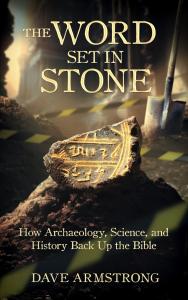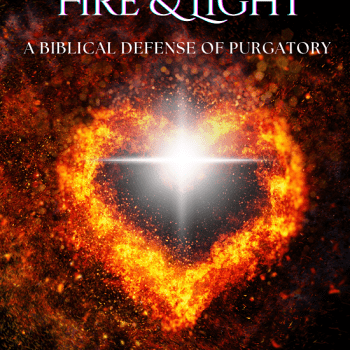Retrograde Motion and the Phenomenological Language of the Bible
Excerpt from my book, The Word Set in Stone: How Archaeology, Science, and History Back Up the Bible (Catholic Answers Press: March 15, 2023, 271 page), pp. 182-187. Follow the link for lots of information about the book, including many free samples.
*****
Now let’s examine Matthew 2:9: “the star which they had seen in the East went before them.” This refers (in context)to the wise men being in Jerusalem and talking to Herod (2:1, 7–9). He “sent them to Bethlehem,” which is south of Jerusalem, about six miles. (I traveled this route in 2014.) Therefore, this, I submit, is what the Bible (which habitually uses phenomenological language [278]) means by saying the star “went before” them. In other words, it would always have been “ahead of” or “in front of” or “before” them as they traveled, much as we say we are “following the sun west” or how American slaves (in folklore, at least, if not in fact) attempting to escape to the north followed the “drinking gourd” (the Big Dipper) north.
Thus, we could say the Big Dipper or North Star “went before” the slaves, just as we say they “followed” it. The North Star would also lead anyone to the North Pole if he kept following it—that is, by our vantage point, it would “go before” him. It’s all phenomenological language, which we use all the time, just as the biblical writers also did.
We know from the astronomical charts that Jupiter, in later November and early December in 2 B.C., was to the south from Jerusalem; therefore, it “went before” the wise men as they traveled south to Bethlehem—the journey that the text refers to. Jupiter wouldn’t have moved much on the way from Jerusalem to Bethlehem.
A camel travels about 3 miles per hour on average, so it would have taken two hours to get to Bethlehem. That’s roughly the entire time the Bible refers to them (in non-literal language, I believe) following a star. In the language of appearance (non-literal language), it “went before them” not in perceived motion, but because it was always ahead of them on the way.
Dag Kihlman provided a more specific view:
Jupiter—if this was the star of Bethlehem—was not seen in the early evenings in December in 2 B.C. It rose very late, at roughly 9 P.M. . . .
A more realistic view (if Jupiter was the star of Bethlehem) is that the Magi traveled early in the morning, when Jupiter was still visible. . . .
If the Magi started at a suitable hour, they would have had Jupiter in front of them as they left Jerusalem. If they traveled by donkey, camel, or horse . . . they would have had Jupiter in front of them all the way to Bethlehem. [279]
And so “the star . . . came to rest over the place where the child was” (Matt. 2:9).
We know from astronomical data that Jupiter entered into retrograde motion. Astronomer Christopher Crockett explains this phenomenon:
Typically, the planets shift slightly eastward from night to night, drifting slowly against the backdrop of stars. From time to time, however, they change direction. For a few months, they’ll head west before turning back around and resuming their easterly course. Their westward motion is called retrograde motion by astronomers. . . . [It’s] an illusion caused by the motion of earth and these planets around the sun. [280]
As an analogy, when we pass a car on the freeway, it temporarily seems to be moving backward. In December, 2 B.C., Jupiter (because of its retrograde motion) appeared to come to a stop above Bethlehem and—according to some researchers—remained there, seemingly motionless (the “rest” in the biblical text), for six days. Ernest L. Martin contends that at dawn on December 25 in that area, Jupiter would have been
at an elevation of 68 degrees, above the southern horizon, shining down on Bethlehem. It would have been the brightest “star” in the sky on that day and at that location. [281]
Let’s examine more closely what the author may have been describing in saying that the star “came to rest over the place where the child was.” First of all, the text doesn’t indicate that it shone specifically on a “house.” This is a common misconception. Matthew 2:11, just two verses later, simply says they went “into a house”—not that the star was shining on it, identifying it. We must be precise about what any given
text under consideration actually asserts and does not assert.
Two of the best Protestant Bible commentators and exegetes of our time, R.T. France and D.A. Carson, agree:
It is not said to indicate the precise house, but the general location where the child was. [282]
The Greek text does not imply that the star pointed out the house where Jesus was or that it led the travelers through twisty streets; it may simply have hovered over Bethlehem as the Magi approached it. [283]
The Greek “adverb of place” in Matthew 2:9 is hou. In the RSV, hou is translated by “the place where” (in the KJV, simply “where”). It applies to a wide range of meanings beyond something as specific as a house. In other passages in the RSV, it refers to a mountain (Matt 28:16), Nazareth (Luke 4:16), a village (Luke 24:28), the land of Midian (Acts 7:29), and the vast wilderness that Moses and the Hebrews traveled through (Heb. 3:9). Thus, it can easily, plausibly refer to “Bethlehem” in Matthew 2:9.
This is an important point because it goes to the issue of supernatural or natural. A “star” (whatever it is) shining a beam down on one house would be (I agree) supernatural—not any kind of “star” we know of in the natural world. But a star shining on an area, in the direction of an area (which a bright Jupiter was to Bethlehem in my scenario, at 68 degrees in the sky), is a perfectly natural event.
Matthew 2:9 is similar to how we would speak in English: “Where I was, I could see the conjunction very well.” “Where” obviously refers to a place. And a person’s place is many things simultaneously. Thus, when I saw the “star of Bethlehem”-like conjunction in December 2020, I was in a field, near my house (in my neighborhood), in my town (Tecumseh), in my county (Lenawee), in my state (Michigan), and in my country (the United States).
This is my point about “place” in Matthew 2:9. It can mean larger areas beyond just “house.” If the text doesn’t say specifically, “The star shone on the house,” then we can’t say for sure that this is what the text meant.
I have found eighteen other English Bible translations of Matthew 2:9 that also have “the place where” (Weymouth, Moffatt, Confraternity, Knox, NEB, REB, NRSV, Lamsa, Amplified, Phillips, TEV, NIV, Jerusalem, Williams, Beck, NAB, Kleist & Lilly, and Goodspeed). In all these cases, they are translating hou, literally meaning “where” but at the same time implying place (which is the “where” referred to). The Living Bible (a very modern paraphrase) has “standing over Bethlehem,” which bolsters my argument (because it doesn’t say “house”).
But what about Luke 2:8–9?
And in that region there were shepherds out in the field, keeping watch over their flock by night. And an angel of the Lord appeared to them, and the glory of the Lord shone around them, and they were filled with fear.
Note that it is the light from an angel (rather than a star) that “shone around them,” and they were not yet visiting Jesus. Thus, Luke 2:15 states, “Let us go over to Bethlehem and see this thing that has happened.” They were not in the same place. When I visited Bethlehem in 2014, I saw exactly how far it was, at least according to local tradition. The birth site is a considerable distance away, and at a higher elevation.
We mustn’t be led astray by extraneous factors when exegeting Holy Scripture. I believe that the explanation I am contending for is feasible and in harmony with both science and the biblical texts. To say, then, that the star “came to rest over the place” is to observe that they didn’t see it moving much over Bethlehem once they arrived there. I’m not an astronomer, but I can cite scientists and other experts who know much more about these aspects. If the wise men hit the right day (in Bethlehem), Jupiter would have appeared to be stationary.
FOOTNOTES
278 See “Phenomenological language in Scripture,” CathInfo.com (February 13, 2018).
279 Dag Kihlman, The Star of Bethlehem and Babylonian Astrology: Astronomy and Revelation Reveal What the Magi Saw (self-published, 2017), 97–98.
280 Christopher Crockett, “What is retrograde motion?,” EarthSky (February 6, 2017). See also (with fun moving diagrams!): “Retrograde motion can be real or illusory,” EarthSky (May 10, 2022).
281 Ernest L. Martin, The Star That Astonished the World (1991), available online at Associates for Scriptural Knowledge.
282 R.T. France, The Gospel According to Matthew: An Introduction and Commentary (Grand Rapids, MI: Wm. B. Eerdmans Publishing, 1985), 84.
283 D.A. Carson, Matthew; part of The Expositor’s Bible Commentary (Grand Rapids, MI: Zondervan Academic, revised ed., 2017), page undetermined at the Google Books page.
***
***
Summary: Explanation for the passage, “the star went before them” (Matthew 2:9), including descriptions of biblical phenomenological language and retrograde motion.














